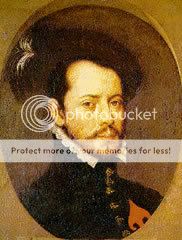Cuāuhtemōc
Banned
The Navatlacas: Heirs to Hernan and Montezuma

The Glass Pyramid of Tenoxtitlana, constructed in 1985 by Francis Casey.
Navatlaca, officially known in government records as the Navatlaca Empire (Spanish: Imperio Navatlacano) (Navatlaca: Empirio Navatlaca) (Latin: Imperium Navatlacanorum) is a constitutional monarchy situated in North America. It is bordered on all sides by multiple countries. Covering almost 2.8 million square kilometers, it is the second largest country in North America and the eleventh largest country in the entire planet. With an estimated population of 108 million people and growing, it is the seventh most populous country and the most populous Navatlacaphone country on Earth. It is a country that comprises thirty eight provinces and one Imperial District consisting of the capital city of Tenoxtitlana.
In Pre-Columbian Mesoamerica, many indigenous cultures matured into advanced civilizations such as the Olmecas, the Toltecas, the Teotihuacanas, the Tzapotēcas, the Mayas and the Aztecas prior to their first contact with Europeans. In 1520, a combined army of Spanish soldiers and native allies under the leadership of Hernan Cortes conquered and subdued the Aztecas. In 1521, large disputes between Cortes and the court of the Spanish King Charles I led to an immediate declaration of independence from Spain which transformed to a bloody war that lasted several years and propagated two more wars that occurred after it.
The beginning years of the post-independence period was characterized by economic instability, tumultuous territorial gains, losses and secessions, and multiple civil wars including multiple foreign interventions and conquests by its neighbors. The latter two led to the Navatlaca Revolution and the Second War of Independence in the 1810s and 1820s which culminated in the establishment of the current political system as a constitutional monarchy under the House of Oaxaca. Parliamentary elections were recently held in 2009 that led to clear majorities being won in both houses by a coalition between the National Alliance and the Conservative Party.
As a economic and military regional powerhouse since its very beginnings, it has joined the official list of potential superpowers for the next century. It is the first member and founder of the Union of Mesoamerican States (UMS), a powerful economic and political organization. Navatlaca has been firmly established as a upper high-income country and is considered industrialized by international standards. It currently has the tenth largest nominal GDP and the eleventh largest by purchasing power parity. The Navatlaca economy is strongly linked to the partners of the UMS especially the Kingdom of Tlaxcala. It is the world's eighth most visited destination with over 25.1 million internationals coming in as tourists every year. It boasts a long and strong tradition in art, architecture, cuisine and the preservation of their culture. It ranks third in the world and the first in the Americas on the list of LoN International Heritage Sites with 41.

The Glass Pyramid of Tenoxtitlana, constructed in 1985 by Francis Casey.
Navatlaca, officially known in government records as the Navatlaca Empire (Spanish: Imperio Navatlacano) (Navatlaca: Empirio Navatlaca) (Latin: Imperium Navatlacanorum) is a constitutional monarchy situated in North America. It is bordered on all sides by multiple countries. Covering almost 2.8 million square kilometers, it is the second largest country in North America and the eleventh largest country in the entire planet. With an estimated population of 108 million people and growing, it is the seventh most populous country and the most populous Navatlacaphone country on Earth. It is a country that comprises thirty eight provinces and one Imperial District consisting of the capital city of Tenoxtitlana.
In Pre-Columbian Mesoamerica, many indigenous cultures matured into advanced civilizations such as the Olmecas, the Toltecas, the Teotihuacanas, the Tzapotēcas, the Mayas and the Aztecas prior to their first contact with Europeans. In 1520, a combined army of Spanish soldiers and native allies under the leadership of Hernan Cortes conquered and subdued the Aztecas. In 1521, large disputes between Cortes and the court of the Spanish King Charles I led to an immediate declaration of independence from Spain which transformed to a bloody war that lasted several years and propagated two more wars that occurred after it.
The beginning years of the post-independence period was characterized by economic instability, tumultuous territorial gains, losses and secessions, and multiple civil wars including multiple foreign interventions and conquests by its neighbors. The latter two led to the Navatlaca Revolution and the Second War of Independence in the 1810s and 1820s which culminated in the establishment of the current political system as a constitutional monarchy under the House of Oaxaca. Parliamentary elections were recently held in 2009 that led to clear majorities being won in both houses by a coalition between the National Alliance and the Conservative Party.
As a economic and military regional powerhouse since its very beginnings, it has joined the official list of potential superpowers for the next century. It is the first member and founder of the Union of Mesoamerican States (UMS), a powerful economic and political organization. Navatlaca has been firmly established as a upper high-income country and is considered industrialized by international standards. It currently has the tenth largest nominal GDP and the eleventh largest by purchasing power parity. The Navatlaca economy is strongly linked to the partners of the UMS especially the Kingdom of Tlaxcala. It is the world's eighth most visited destination with over 25.1 million internationals coming in as tourists every year. It boasts a long and strong tradition in art, architecture, cuisine and the preservation of their culture. It ranks third in the world and the first in the Americas on the list of LoN International Heritage Sites with 41.
Last edited:


